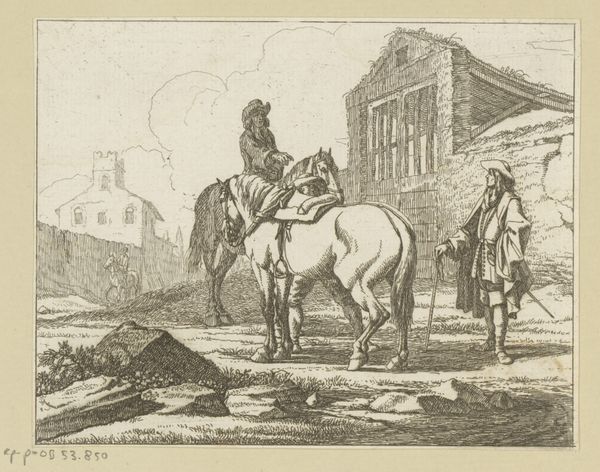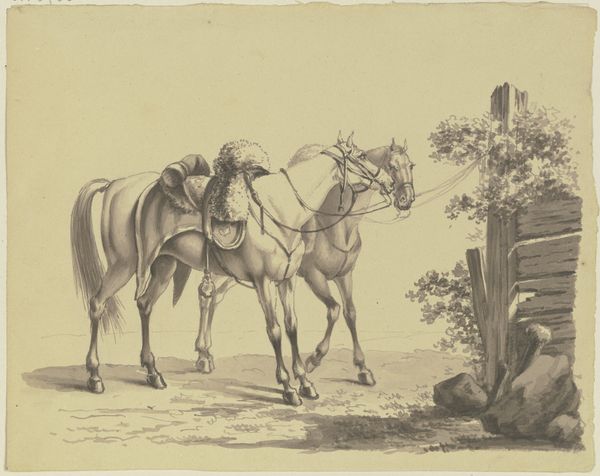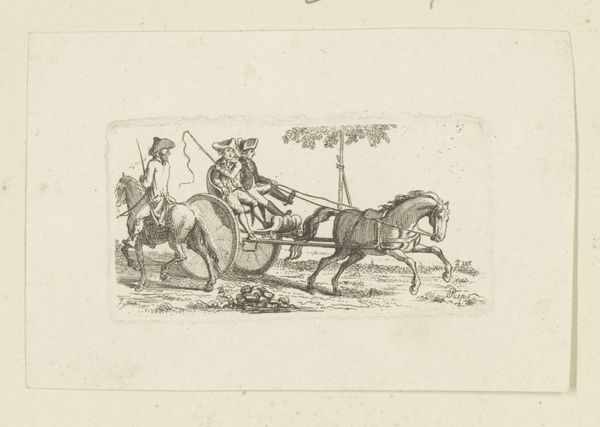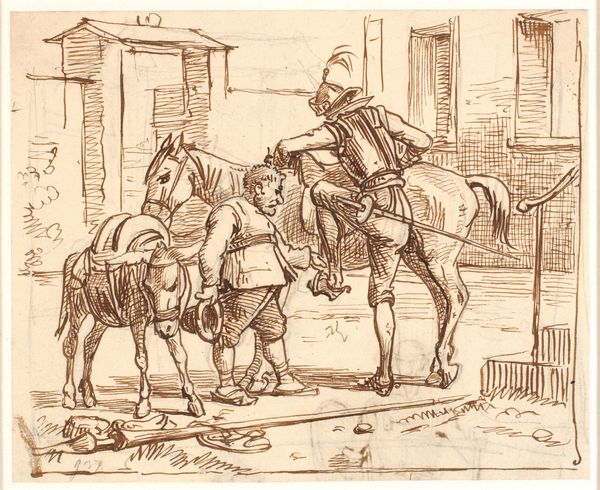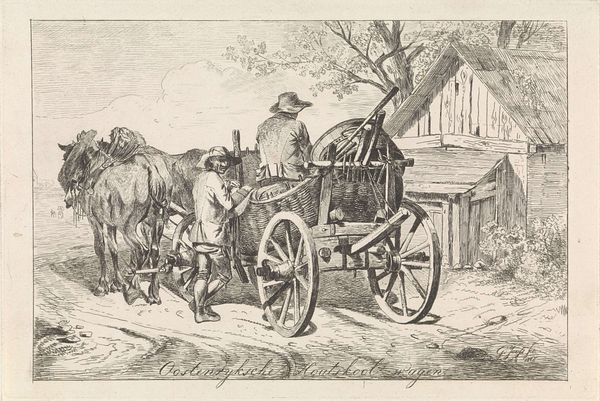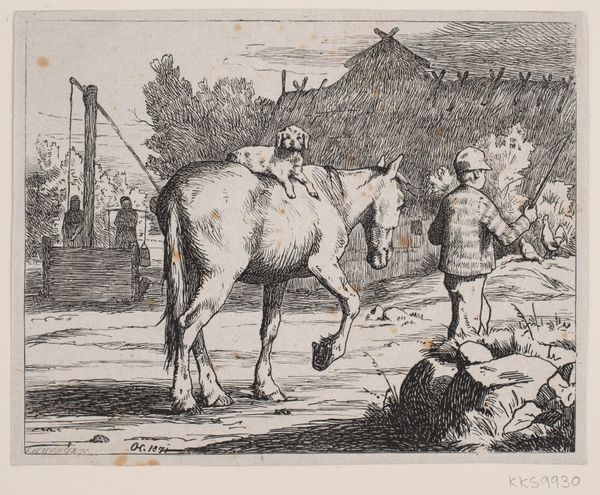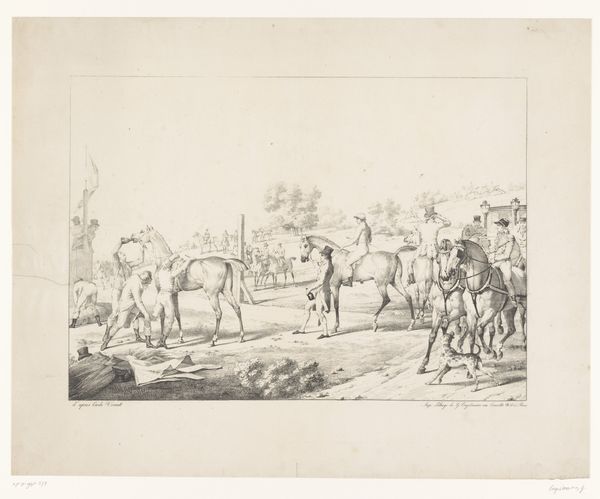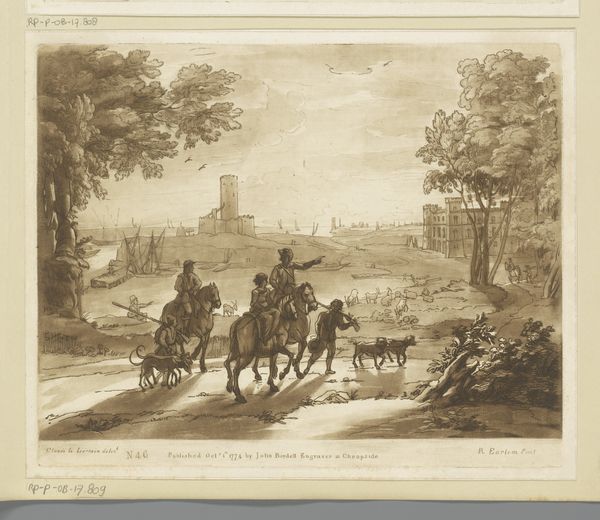
drawing, etching, pencil
#
drawing
#
aged paper
#
light pencil work
#
pen sketch
#
etching
#
pencil sketch
#
sketch book
#
personal sketchbook
#
romanticism
#
pen-ink sketch
#
pencil
#
pen work
#
sketchbook drawing
#
cityscape
#
genre-painting
#
sketchbook art
Dimensions: height 472 mm, width 585 mm
Copyright: Rijks Museum: Open Domain
Editor: This is "Two Men in a Carriage," an etching with pencil by Alexander Orlowski, around 1820. I am struck by how quickly he captured the scene; you can almost hear the horses. What stands out to you about it? Curator: For me, it's the way the etching process reveals the materiality of 19th-century print culture. The very lines that form the image are a direct consequence of acid biting into a metal plate, controlled by Orlowski's hand, making possible a mass production and dissemination of such imagery. Think about the labor involved—the metalworker creating the plate, Orlowski’s skill, the printer pulling each impression. Does that change how you perceive the “speed” of the scene? Editor: It does, actually. Knowing the process, it feels less spontaneous and more like a crafted commentary. Were these etchings considered fine art at the time? Curator: That’s a good question. Etchings occupied an interesting space, blurring the lines between fine art and commodity. Were these prints meant for wealthy collectors, or were they circulated more broadly, influencing popular taste and fashion through reproduction? Consider also the price point—how did this impact the accessibility and therefore the reception of Orlowski's vision? Editor: That tension between art and commodity makes me see it differently. I appreciate the artist’s craft, and the many hands involved in production to get the image to the public. Thanks for highlighting the material realities behind this etching. Curator: And thank you for noticing that seemingly spontaneous feel of the scene - those quick lines suggest both freedom and the controlled process necessary for such a print to be realized, inviting reflection on the complex interactions between production, distribution, and artistry.
Comments
No comments
Be the first to comment and join the conversation on the ultimate creative platform.

